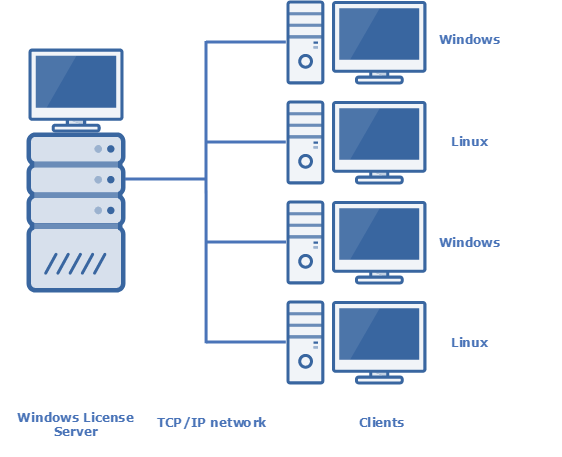Introduction
A node locked license is a license that can be used on one PC. It is created for that PC and will not work on another PC. Floating licenses are licenses that are installed on a license server and that can be used by PCs that have network access to that license server. Floating licenses are used to share a limited amount of licenses among a larger group of users.
This document describes how to use floating licenses on Windows.

How to set up a license server can be found in Setting up an SLL license server. Setting up a license server is done by the License Administrator. This usually is a System Administrator.
To find the license server, the client needs the SLL client configuration file, sll_client.cfg, in one of the locations mentioned below.
* A Linux license server is available for certain Linux distributions upon request. Please send an email to support@marin.nl for more information.
SLL client configuration file
<sll> <local enabled="false" /> <server enabled="true" host="yourlicenseserver.server.local" port="32481" /> </sll>
Replace yourlicenseserver.server.local by the hostname or DNS name of your license server. Replace the portnumber by the portnumber specified by your license administrator, if he changed the default portnumber of the license server (32481).
Locations of the SLL client configuration file
C:\Program Files\marin\licenses C:\Program Files (x86)\marin\licenses C:\ProgramData\marin\licenses
These locations do not exist on your PC by default. You need to create one of them if they do not exist yet.
C:\ProgramData is an invisible folder.
MARIN SLL license files and/or client configuration files can be stored in other locations on your PC. If you do so, please make sure that location is stored in environment variable MARIN_LICENSE_PATHS. Several license locations can be stored in this environment variable. They have to be separated with a semicolon(";"). For more information on how to set this variable in Windows, please read Adding the MARIN_LICENSE_PATHS environment variable.
Please do not add the MARIN_LICENSE_PATH environment variable if the license and/or the client configuration file is in one of the default locations